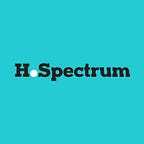Discovering Trends in the Future of Real World Data
Darren began his talk by using the movie “The Matrix” as an example. In the movie, the main character is offered to choose between a red pill or a blue pill while knowing the outcome of each. Connecting it to our world, if during drug development, we were able to get the least errors, or results most similar to the hypothesis, then we would be able to reduce the costs and the time spent.
What is Real-World Data (RWD) and Real World Evidence (RWE)?
Real-world data is data relating to patient health status and/or the delivery of healthcare, routinely collected from a variety of sources, such as electronic health records (EHRs), health plans, delivery systems, wearable devices and data gathered from other sources that can inform on health status. Real-world evidence is the clinical evidence derived from the analysis of RWD.
How RWD and RWE are used?
Nowadays, one of the biggest challenges for drug development is the lack of patients. As there isn’t enough sample size, the drug development of rare diseases tend to face bottlenecks during research. This is how RWD/RWE comes in hand, says Darren. The first approval of the U.S. Food and Drug Administration (FDA) for the clinical study that uses RWD and RWE is a clinical study of Batten disease, a rare nervous system disease that has no treatment developed at the moment. One of the world’s premier biopharmaceutical companies, Pfizer, has used the results of RWD from electronic health records(EHRs) as supportive data for the treatment of breast cancer in male patients. Insurance cover, case study for clinical-genomic cancer also used RWE to support their hypothesis.
The usage of RWD/RWE has increased due to “ The 21st Century Cures Act (Cures Act)” that passed on December 13, 2016 in the U.S. It is designed to help accelerate medical product development and bring innovations and advances to patients in need. Through this act, the FDA was asked to develop a regulatory framework that incorporates RWD and RWE as part of its drug approval process. This framework may include the types of data that could be used and how to study and design a human subject projection. The official guideline is said to be published in 2021.
How can RWD and RWE benefits the world?
By using RWD and RWE, one can accelerate the drug’s development. It can also be used as support changes to the drug product effectiveness labeling. Through linking multiple RWD sources, such as health plans and hospitals, we can get a more standardized data source more efficiently.
A few sources developed by the FDA has been introduced by Darren. For instance, FDA MyStudies is an app designed to facilitate the input of real-world data directly by patients. Since it is developed by the FDA, it meets the federal requirements in terms of security and auditing. The app can be linked to electronic health data to support traditional clinical trials, pragmatic trials, observational studies, and registries. By using RWD, pragmatic trials that focus on the correlation between treatments and outcomes in the real-world health system can get more precise data.
Additionally, the Sentinel System, launched by the FDA, is a national electronic system which has transformed the way researchers monitor the safety of FDA-regulated medical products, including drugs, vaccines, biologic, and medical devices. It integrates 18 different data sources from delivery systems and insurance company to provide post-market safety information of products on the market.
Future Trend: Harmonizing Multiple Real-World Data Sources
There are more and more data source organizations within a country and around the world. For instance, another type of multi-database collaborative in the U.S. is mostly an EHR based system called the PCORnet. This is an infrastructure that the U.S. built to use EHR to facilitate clinical research.
With all these different organizations around, what is the best way to cooperate?From Darren’s experience, the best way and the most efficient way to facilitate the multi-database analysis is to standardize the data in advance. This can ensure everyone is on the same page to avoid mistakes and thus make the downstream studies more effectively.
Researches using RWD and RWE are the future trends which accelerate progression. Through Darren’s speech, the importance of RWD and RWE in the healthcare sector are revealed. A great challenge in the future research is knowing how to make good use of the data to accelerate development.
About Darren Toh, ScD
Darren Toh, ScD is an Associate Professor in the Department of Population Medicine at Harvard Medical School and Harvard Pilgrim Health Care Institute. He is a pharmacoepidemiologist with an interest in the comparative safety and effectiveness research of medical products. His research has been focused on 1) assessing the risks and benefits of medical products using electronic data collected as part of routine healthcare delivery, and 2) developing and applying privacy-protecting analytic methods to conduct multi-center studies in distributed data networks. Darren received his doctoral degree in Epidemiology from the Harvard School of Public Health.
Edited by Chia-Hsin Hsieh
Revised by Iris Lu, Diana Jang, Britney Lin
